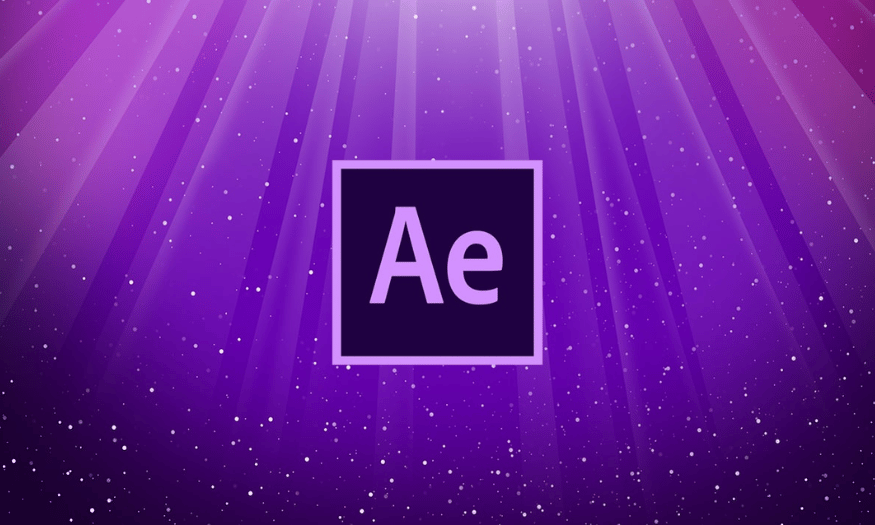Best Selling Products
Mastering After Effects: Everything You Need to Know
Nội dung
- 1. Introduction to After Effects and its outstanding features
- 1.1 Animation
- 1.2 Simulation
- 1.3 Text Animation
- 1.4 Compositing
- 2. Applications of After Effects in different fields
- 2.1 Advertising
- 2.2 Education
- 2.3 Cinema
- 2.4 Social Media
- 3. Compare After Effects with other software
- 3.1 After Effects vs Premiere Pro
- 3.2 After Effects vs Cinema 4D
- 4. System requirements for After Effects software
- 5. Detailed After Effects installation steps
- 6. Get familiar with the After Effects interface
- 7. Basic Concepts in After Effects
In the world of modern cinema and media, Adobe After Effects has become an indispensable tool for filmmakers, designers, and content creators. With the ability to turn creative ideas into vivid products, After Effects is not only video editing software but also an art. This article Sadesign will guide you from basic knowledge to advanced techniques, helping you master After Effects and open the door to express yourself in the most free and creative way.

In the world of modern cinema and media, Adobe After Effects has become an indispensable tool for filmmakers, designers, and content creators. With the ability to turn creative ideas into vivid products, After Effects is not only video editing software but also an art. This article Sadesign will guide you from basic knowledge to advanced techniques, helping you master After Effects and open the door to express yourself in the most free and creative way.
1. Introduction to After Effects and its outstanding features
After Effects was first developed in 1993 and quickly established itself in the video industry. It is not only a regular video editing software but also a powerful tool for creating motion graphics and visual effects. With the ability to process 2D and 3D graphics, After Effects offers users a series of outstanding features:
1.1 Animation
One of the strengths of After Effects is the ability to create automatic movements for video elements through keyframes. Using keyframes makes it easy to control the timing and path of objects, creating smooth and natural movements.
1.2 Simulation
The software also allows you to create realistic physical effects like wind, water, or fire. These effects not only add realism to the final product but also highlight your creativity in each project.
1.3 Text Animation
Text can also be made more dynamic and engaging with a variety of styles and effects. After Effects gives you the tools to add motion, zoom, and even fly-through text effects to help convey your message more dynamically.
1.4 Compositing
Combining multiple layers of images to create a complete scene is another prominent feature of After Effects. You can add light, shadow, and effects to create a perfect picture, enhancing the viewing experience for the audience.
These features not only help you create interesting videos but also open up many career opportunities in the field of media and marketing, where creativity and originality are valued.
.png)
2. Applications of After Effects in different fields
After Effects is not only a design software but also a useful tool in many different fields. Here are some outstanding applications:
2.1 Advertising
In the advertising field, After Effects allows you to create attractive promotional videos, attracting customers through vivid motion effects. Moving images are not just decoration, but also help to enhance the message you want to convey, making it more unforgettable in the minds of viewers. Thanks to the ability to create impressive images, you can easily stand out among millions of other advertising messages.
Beyond just creating videos, After Effects also provides powerful tools to optimize content for each media platform. You can easily adjust the size, ratio, and effects to suit each distribution channel, from television to social networks. This not only saves time but also helps you maximize the effectiveness of advertising campaigns.
2.2 Education
In education, After Effects can be used to create animated instructional videos, turning boring lessons into engaging experiences. These videos help students absorb knowledge, as images and sounds combine to highlight complex concepts. The use of motion graphics helps illustrate ideas visually, making learning easier than ever.
Furthermore, After Effects opens up opportunities for teachers to create unique and engaging learning content. You can add interactive effects, create fun quizzes, or even game learning. This not only increases student interest but also encourages them to participate more actively in the learning process.
2.3 Cinema
After Effects helps filmmakers create unique and rich visual effects. From creating eye-catching action scenes to adding visual effects to animated films, the software has become an indispensable tool in the film industry. The ability to create special effects, from smoke and fire to animated creatures, enhances the quality of the final product and creates impressive cinematic experiences.
In addition, After Effects also supports the film production process from pre-production to post-production. You can easily create animated storyboards, helping the production team visualize the scene better. This not only saves time but also ensures that everything runs smoothly and efficiently during filming.
2.4 Social Media
Nowadays, creating short videos to share on social media platforms is extremely important. After Effects helps you create eye-catching, engaging and easily shareable videos, helping you reach your target audience more effectively. With unique effects and creative styles, you can easily create outstanding content in a sea of information.
In addition, the software also allows you to optimize content for different platforms such as Instagram, TikTok or Facebook. You can easily adjust the video format and size to suit the specific requirements of each platform. This not only saves you time but also ensures that your videos always achieve optimal efficiency when they reach viewers.
.png)
3. Compare After Effects with other software
When it comes to video production and visual effects, users are often faced with a variety of software options. However, to decide whether After Effects is worth the investment, we need to conduct a detailed comparison with other software. Understanding the differences and strengths of each software will help you make the right decision for your project.
3.1 After Effects vs Premiere Pro
Premiere Pro and After Effects are both Adobe products, but they serve two different purposes. Premiere Pro is a professional video editing software that allows users to cut, arrange clips, and adjust audio smoothly. This is the ideal place for those who need to do basic to advanced video editing steps. With a friendly interface and powerful tools, Premiere Pro makes it easy to create complete videos in a short time.
On the other hand, After Effects focuses on creating visual effects and animations, making it an ideal choice for those who want to add life to their videos. With a rich library of effects and high customization, After Effects allows you to create unique animations, from transitions to eye-catching intros. The combination of Premiere Pro and After Effects will help you achieve a perfect workflow, from basic video editing to advanced effects creation, creating a more impressive viewing experience.
One thing worth noting is that both of these software can integrate with each other easily. You can edit a video in Premiere Pro, then move to After Effects to add complex effects without any difficulty. This not only saves time, but also helps you optimize your workflow, ensuring that the final product is of the highest quality.
.png)
3.2 After Effects vs Cinema 4D
Cinema 4D is a prominent 3D graphics software widely used in the film and media industry. With the ability to create detailed 3D models, animations and renderings, Cinema 4D is a great choice for those who want to delve into the 3D field. The software offers a range of powerful tools, allowing you to easily build and design 3D images, and create realistic lighting and shadow effects.
On the other hand, After Effects is more powerful when it comes to 2D effects, animation, and compositing. If you need to create videos with dynamic animations, After Effects is the ideal tool. From creating animated logos to adding special effects to videos, After Effects can bring your creative ideas to life in a snap.
However, if you want to combine 3D and 2D, using both Cinema 4D and After Effects will help you expand your creativity. You can create 3D models in Cinema 4D and then import them into After Effects to add 2D animation and motion effects. This combination not only results in impressive products but also helps you develop more diverse design skills.
.png)
4. System requirements for After Effects software
For After Effects to run properly, your computer needs to meet a few basic requirements. First, the operating system is important; Adobe regularly updates After Effects to be compatible with the latest versions of Windows and macOS. This means you should always make sure you're running the latest version of your operating system.
On the hardware side, your CPU also needs to be powerful enough to handle heavy tasks in After Effects. A modern processor will help you work with complex effects without experiencing lag. RAM is also a must; at least 16GB of RAM will help you work on large projects without interruption. Finally, a graphics card that supports OpenGL 2.0 or higher is required to take advantage of After Effects' graphical features. By ensuring that your computer meets these requirements, you will minimize performance issues and be able to focus on being creative.
.png)
5. Detailed After Effects installation steps
Once you are sure that your computer is powerful enough to install After Effects, proceed with the following detailed installation steps:
Download the software : Go to Adobe's official website and look for the After Effects download section. Make sure you choose the correct version for your operating system.
Installation : Once downloaded, open the installation file and follow the on-screen instructions. This process is usually quick and easy, requiring just a few clicks.
Sign In : Once the installation is complete, you will be asked to sign in to your Adobe account. If you do not have an account, create a new account to continue.
Activation : Enter the activation code if you have purchased After Effects, or you can choose a 7-day free trial to explore the software's features.
.png)
6. Get familiar with the After Effects interface
The After Effects interface can be daunting for beginners, but rest assured that once you get used to it, you will find it very user-friendly and easy to use. The interface is designed to support you as much as possible in the process of creating unique photo and video effects.
Project Panel : This is where you manage all your project files and assets. From images, videos to audio, everything is neatly organized, making it easy to find and sort.
Timeline : In the Timeline, you'll work with layers, keyframes, and effects. This is where all the magic happens, allowing you to precisely adjust the timing and placement of elements in your video.
Composition Panel : This is where you preview the video being created. The Composition Panel allows you to see the changes you make live, giving you easy control over the final product.
Tools Panel : Contains basic tools such as Selection Tool, Shape Tool and Text Tool, helping you easily perform design operations. With a variety of tools, you can create everything from simple images to complex effects.
.png)
7. Basic Concepts in After Effects
Compositions are the heart of After Effects, where you start creating unique videos. Each composition allows you to combine multiple layers of video, images, and audio to build complex, dynamic scenes. Think of a composition as a canvas, where you have the freedom to create and organize your ideas the way you want. You can create multiple compositions within the same project, making it easy to organize and manage different parts of your video.
Layers are the building blocks of a composition. Each layer can be an image, video, text, or any other type of data. Adjusting the order in which layers appear gives you control over how the elements interact with each other. You can apply unique effects to each layer, creating different movements and emotions in your video. Remember, the right arrangement of layers can be a powerful way to tell a story through visuals.
The Timeline is where you manage all the layers in your composition. It’s where you set keyframes and adjust the timing of each layer. The Timeline not only helps you keep track of the timing of elements, but also allows you to clearly see the relationships between them. Understanding how to use the Timeline will help you create smooth, natural movements, improving the quality of your final product.
Keyframes are one of the most important concepts in After Effects. They are markers in the Timeline that indicate the state of a property at a particular point in time. Using keyframes allows you to create animations by changing the value of a property between different keyframes. Imagine driving a car; you set a keyframe at the start and end points, and After Effects automatically creates a path for you.
Animation is the process of creating movement in layers. From panning and rotating to zooming in and out, animation brings your videos to life and helps your audience feel emotions through movement. A video without animation is static and unengaging. Experiment with different animation techniques to find your own style and create unique products.
Effects are effects that help highlight layers, creating unique and impressive images. After Effects provides a rich treasure trove of effects such as Blur, Glow, Color Correction and many other effects. Applying these effects not only helps you enhance the aesthetic value of your videos but also creates new visual experiences for viewers.
Mastering these concepts will be the key to confidently entering the creative world of After Effects. We wish you an enjoyable and inspiring experience working with this software!












































